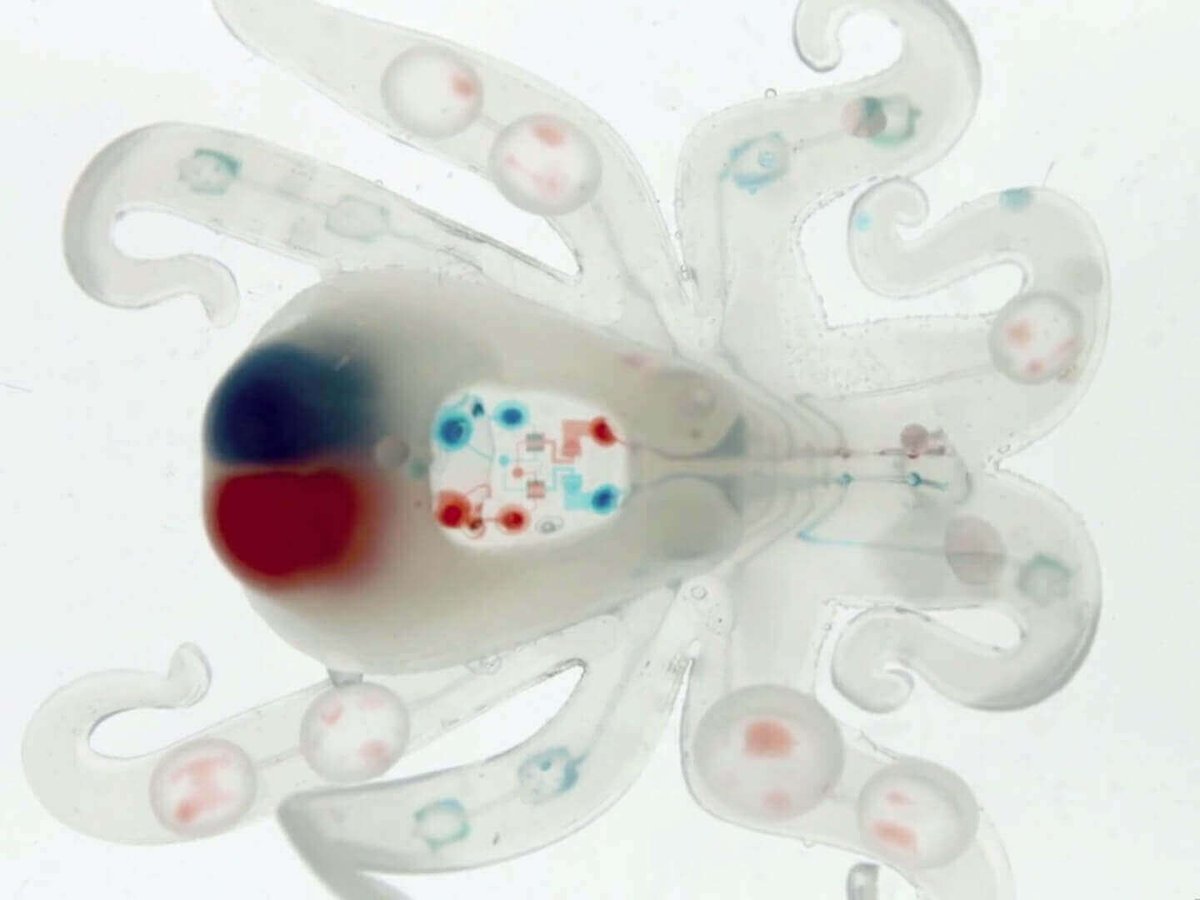Developed by a team of researchers at Harvard University, the Octobot is a 3D printed robot octopus that powers itself by chemical reactions.
A cross-disciplinary team of Harvard University researchers — combining expertise in 3D printing, mechanical engineering, and microfluidics — has created the world’s first autonomous, untethered, entirely soft robot. Plus, it makes a virtue of farting.
The small, 3D printed automaton has been dubbed the “octobot”, thanks to it’s resemblance to a cephalopod mollusc, and it could be the first in a new generation of soft robots.
Why is this a big deal? Because soft robotics could greatly enhance the way humans interact with machines. But researchers have struggled to come up with a design that’s 100% compliant.
Things like such as batteries, circuit boards and other electronic components have remained stubbornly rigid. Until now, soft-bodied robots could only work by tethering them to an off-board system, or rigged with hard components.
The full research is detailed in the journal Nature, and here’s a snazzy video of the Octobot in action:
Octobot has Eight Arms to Hold You
The team was led by Robert Wood, the Charles River Professor of Engineering and Applied Sciences, and Jennifer A. Lewis, the Hansjorg Wyss Professor of Biologically Inspired Engineering at the Harvard John A. Paulson School of Engineering and Applied Sciences (SEAS).
As Lewis explains:
“Through our hybrid assembly approach, we were able to 3D print each of the functional components required within the soft robot body, including the fuel storage, power, and actuation, in a rapid manner. The octobot is a simple embodiment designed to demonstrate our integrated design and additive fabrication strategy for embedding autonomous functionality.”
According to researchers, the humble octopus has long been a source of inspiration in the field of soft robotics. This is primarily because of their curious ability to perform incredible feats of strength and dexterity without an internal skeleton.
Another interesting tidbit — and no giggling at the back — is that the octobot is built around pneumatic principles, which means it’s powered by gas under pressure.
A chemical reaction inside the bot transforms a small amount of liquid fuel (hydrogen peroxide) into a large amount of gas, which flows into the octobot’s arms and inflates them like balloons. In other words, it farts as though its existence depended on it.
Source: Havard Gazette

License: The text of "Octobot is a Farting Robot Octopus that’s 3D Printed" by All3DP is licensed under a Creative Commons Attribution 4.0 International License.